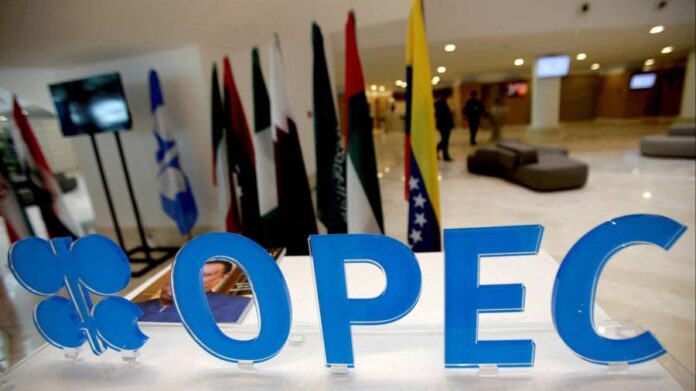Oil prices jumped on Monday and Goldman Sachs raised its year-end forecast for Brent crude after Opec+ nations announced unexpected production cuts of more than 1mn barrels a day in the face of weaker demand.
International oil benchmark Brent crude was up 6.4 per cent to $85 a barrel — having been up more than 8 per cent in overnight trade — and on track for its biggest one-day gain in a year. US marker West Texas Intermediate was up 6.4 per cent to $80.48 a barrel.
Elevated oil prices may muddy the picture for investors who had pencilled in cooling inflation and a more dovish path for the US Federal Reserve. Data released last week showed that the core personal consumption expenditures index — the Fed’s preferred measure of inflation — softened in February. Investors are pricing in a better than even chance of a 0.25 percentage point rise at the central bank’s next meeting in May.
However, since US inflation is largely service-based, and is less reliant on oil imports, the effects of the production cuts could be moderated.
“For the US it is not a particularly big concern, but it will be interesting to see if it is sustained and retail gas prices rise, which would matter for headline inflation expectations,” said Veronica Clark, an economist at Citigroup. “Those have been coming down so it would be more worrisome if that turns around.”
Complicating the picture on Monday, ISM data showed that US manufacturing activity had fallen to its lowest level in almost three years. That helped push the yield on 10-year US Treasuries down 0.06 percentage points to 3.43 per cent, as prices rose.
Broader equity markets in the US were mixed, with the blue-chip S&P 500 up 0.1 per cent and the tech-heavy Nasdaq Composite down 0.8 per cent.
The sharp gains for crude and energy companies came after Saudi Arabia announced it would implement a “voluntary cut” of slightly less than 5 per cent of its output, or 500,000 barrels a day, “in co-ordination with some other Opec and non-Opec countries”.
Russia, a member of Opec+, also said it would extend its existing production cut of 500,000 b/d until the end of the year.
Shares in European energy companies jumped on the news, with the Stoxx Europe 600 oil and gas index closing up 4.1 per cent while the FTSE 100, which has a heavier weighting to energy companies than most indices, rose 0.5 per cent.
Rising oil prices may also complicate the European Central Bank’s attempts to maintain price stability — the continent is more reliant on oil imports than the US.
“It was a difficult juggling act already, trying to avoid a financial crisis, beat inflation and not cause a slowdown,” said Neil Birrell, chief investment officer at Premier Miton. “That’s just become much more difficult with the reduction in production, which will lead to higher prices and inflation. It’s another headache for them.”
The cut to production comes amid heightened uncertainty over the outlook for global oil demand after the US publicly held off on new crude purchases to replenish its strategic stockpile — despite previously pledging to Saudi Arabia that it would buy more if its reserves fell.
In response to the cuts, economists at Goldman Sachs raised the bank’s year-end price forecast for Brent crude by $5 to $95 a barrel on the back of an expected daily decrease in output of about 1.1mn b/d. The bank also boosted its forecast for the end of 2024 to $100 a barrel.
“Opec+ has very significant pricing power relative to the past given its elevated market share, inelastic non-Opec supply and inelastic demand,” said Daan Struyven, senior energy economist at Goldman Sachs.
Struyven said the move reflected a “precautionary production cut” similar to that made by the oil cartel in October 2022, but added that “unlike then, the momentum for global oil demand is up not down with a strong China recovery”.
Elsewhere in Europe, there was a mixed picture in equity markets, with the region-wide Stoxx 600 down 0.1 per cent, the German Dax 0.3 per cent lower and the French Cac 40 up 0.3 per cent. In Asian trading, Japan’s benchmark Topix index rose 0.7 per cent and Hong Kong’s Hang Seng index was flat, while China’s CSI 300 rose 1 per cent.
Credit: Source link















